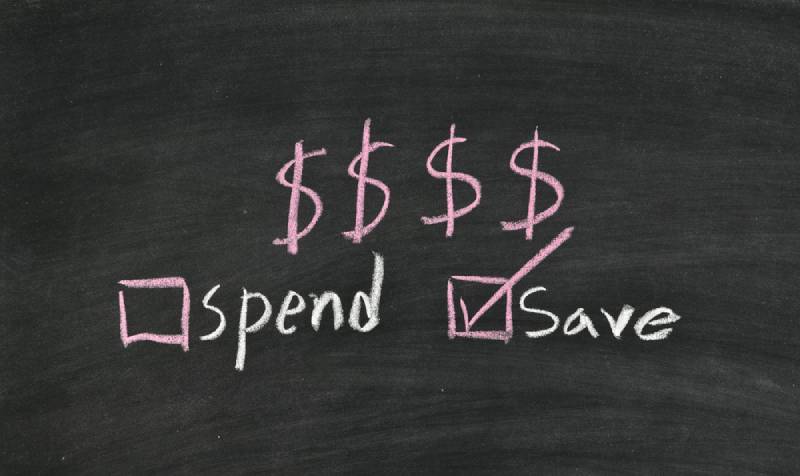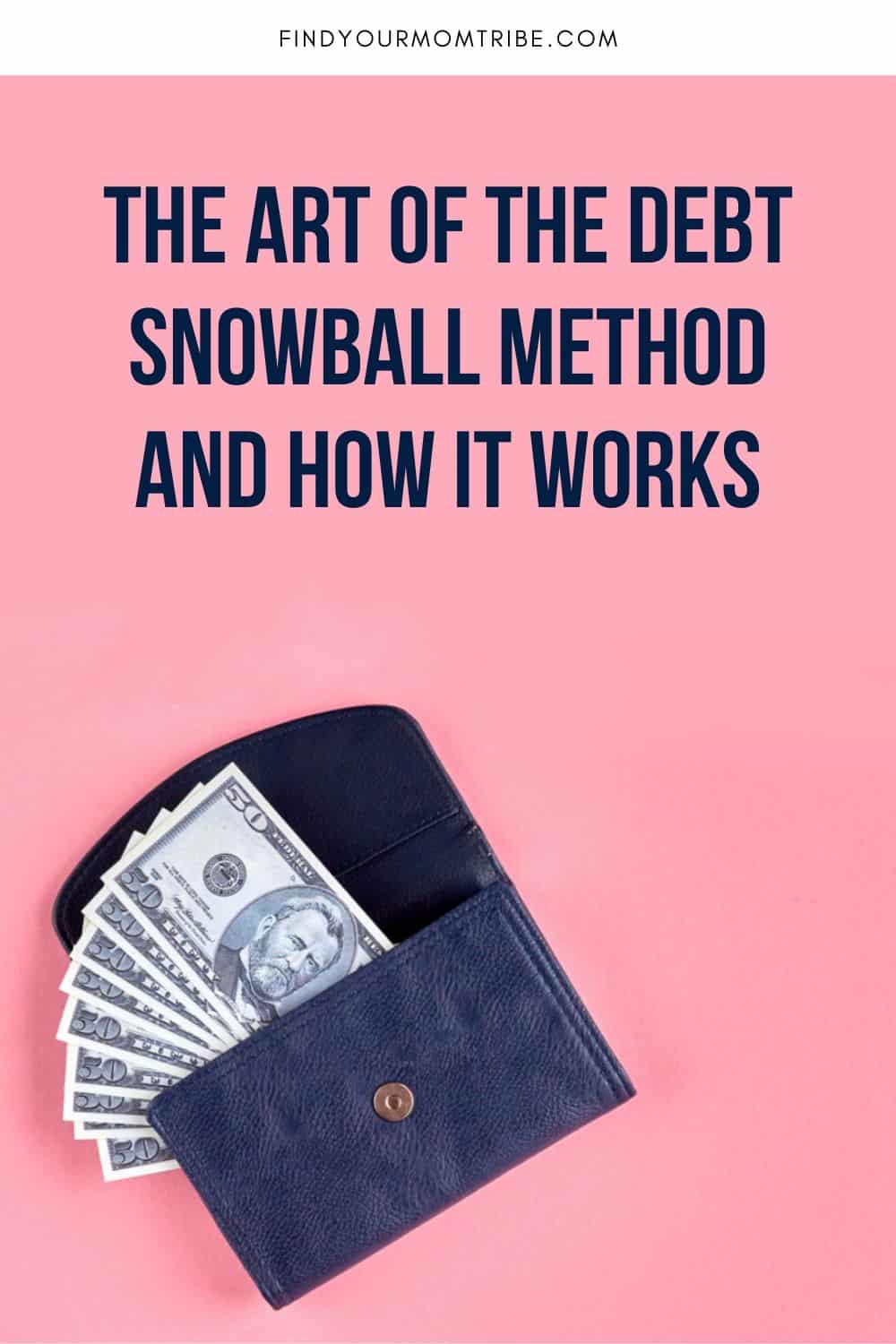Many of us struggle to find the right way of managing our debt payments in an efficient manner.
Or, we simply lack the motivation to focus on it and see it as a chore.
What if I told you that there was a way to resolve your debts in a timely manner and feel a sense of accomplishment as you do so?
Let me introduce you to what we call the Debt Snowball Method.
What is the Debt Snowball Method?
To put it simply, it refers to the way you make a snowball in a field of snow. The ball starts off small, but you set it down and keep the snowball rolling.
In time, the snowball grows, gradually increasing until it attains the desired size.
And during this entire process, you become happier and happier because bigger is better.
But what does this mean for us?
Well, in the world of managing personal finances, it means lining your debts up by checking your budget, making your minimum payments, and then adding any extra money that you have for the month toward paying off your smallest debt.

Or rather, the debt with the smallest interest rate.
Then you move on to the next smallest debt and so on and so on and as you pay them off, your pace increases until you eventually become debt-free.
This is the complete opposite to the Debt Avalanche Method, where you still make minimum payments like any responsible adult, but instead of focusing on the smallest interest rate debt like you would here, you start with the highest one and work your way down.
Quicker, but less rewarding.
How the debt snowball method works: a detailed explanation
Before we go through the steps, you should first grab a calculator, figure out and categorize your monthly expenses, and create a budget calendar.
Once that’s out of the way, you’ll be able to see how much money you can put aside to pay your monthly debts off.
Now you’ve done that, I can begin explaining how to properly allocate said budget toward the debt snowball method.
Do keep in mind that any extra income that you accrue, whether through Christmas bonuses, surprise birthday gifts, gambling (if you indulge in that), or anything similar should be directed toward paying off your current target debt.
This extra income is usually called either “debt snowflakes” or being “gazelle intense”.
Now, to the actual debt reduction method itself.
1. Order your debts from the smallest balance to the largest

You do this because right now you don’t need to look at the amount of interest each debt is accruing, you need to look at the lowest amount that you have to pay off.
This is so you can have a clear goal in mind and so you know where to start funneling your extra income.
2. Pay the minimum payments off
First and foremost, you need to make sure you have enough money in your budget to cover all of your minimum payments.
To work out how much money that is, just add up all of the interest that these debts accrue.
That is the minimum that you have to pay.
Once that part is done, calculate how much extra money you have remaining.
This is done by taking your income and subtracting it from all of your expenses.
If the resulting number is positive, then good.
That means you have something to work with and something to direct toward paying off your debts.
If the number is 0, then you’re dead even. While this is not bad, you should try to find ways to get some extra income rolling.
RELATED:
- Make $50 A Day While Being A Stay At Home Mom: 21 Amazing Tips
- 20 Different Money Saving Challenges Stay-At-Home Moms Can Try

On the other hand, if the resulting number is negative, you should take a look back at your finances for budget leaks since you don’t want to be losing money.
Find places where you can cut expenses, like cutting down on your gas consumption and swapping to public transport – or even walking if your place of work is near enough.
Swap from public cable to subscription based viewing services like Netflix.
Create a budget meal plan and get cheaper groceries. Buy clothes at thrift stores. Save on school supplies.
The list goes on and on and there are always places to cut down on expenses if you’re willing to look for them.
RELATED: How Do We Cut Our Budget When There’s Nothing Left To Cut?
3. Direct the extra cash into your debt repayment plan
As mentioned in the previous step, the first thing you do is cover your monthly payments, the minimum of accrued interest debt each month.
Once that is done, you direct any extra cash toward the first debt, the one with the lowest balance at the time.

Eventually you’ll knock that small debt out and you can begin working on your next debt in line.
This is done after you redo the initial steps first in case something has changed in the order.
Repeat with this method of debt payoff until you reach your highest interest debt and finally pay the last high interest debt off, officially making yourself debt-free.
An example from real life
Theory is all well and good, but an application of said theory is always helpful.
Let’s take something basic as an example.
You check through your debts and find out that you have:
- A computer bill – $700 – $50 payment
- Vacation fees – $3000 – $74 payment
- A personal loan – $3200 – $76 payment
- Renovation costs – $9000 – $100 payment
- Student loans – $12000 – $94 payment
If we go about these debts using the debt snowball plan, we would begin by paying all of the intended minimums first, then diverting any extra budget toward the lowest one, the computer bill, which would be equal to about $344.
The remaining $50 for the computer bill is added atop the extra money that you’re funneling into this small debt.
For instance, you’ve done some extensive bookkeeping and realized you could get another $300 extra by removing some old subscriptions or luxuries and you took on some extra work to fill your free time over the month and earned another $400 debt snowflake.

With all of that you can manage the first debt in the first month, freeing up the $750 you’ve just used on the computer bill to direct toward the next debt in line.
The process now repeats, except you add the $750 onto the $74 payment you already make for your vacation fees.
This means that after 4 months you would have paid this debt off with $528 left to spare, which then eliminates that much from the personal loan, leaving you with $2672 on that one, with you funneling $900 toward that debt now.
We’re over half-way there and the snowball keeps piling up, adding extra money to itself to knock those debt pins out of the way.
In a quick 3 months, you knock this one out too, with the $28 left over going to the renovation costs, leaving that debt on $8972, with you managing a hefty $1000 spare to funnel toward it.
In 9 months time this debt is done, with yet another $28 pushing those student loans down to $11972 and you managing $1094 toward it.
This lets you pay off the student loan in 11 months with some extra cash remaining on the side, but the good news is that you are finally done. You are debt-free after 28 months.
It won’t even feel like it was 28 months. It won’t feel it because you’ve been hitting these milestones with your repayment strategy.

You’ve been knocking them out one by one, each one a personal victory that helped drive you forward and now you’re here.
A great side benefit of all of this is that as you were knocking all of these debts out, your credit score has steadily been climbing.
This means that for any future loans you take, you’ll now have access to better interest rates and will have to pay lower finance charges on your loans and your credit card bills, meaning that this method will only be faster the next time around.
You should feel proud of yourself.
Is this method for me?
You might be asking yourself this very question as you’re reading this article, and it depends.
Are you motivated by quick wins, someone who doesn’t enjoy dealing with numbers, and would you rather slowly free your budget up so you don’t have to devote as much of your monthly budget to paying debts off?
Or maybe you just have a large credit card balance.
Then yes, this method is for you.

However, if you’re the kind of person who likes saving money despite it meaning that you’ll have to be keeping a tight budget; or if you are more of a logical thinker and someone who likes efficiency, then you might want to try the aforementioned debt avalanche method since that solves the highest interest rate debts first.
I suggest you ask yourself these questions before deciding on a plan.
Use a calculator for both methods if you would rather have a visual.
Financial expert Dave Ramsey has a debt snowball calculator that’s rather simple to use.
Is this the most efficient method?
As mentioned earlier, it is efficient, but not the most efficient.
What this means is that with the debt snowball method you will end up freeing your budget up procedurally, but it will take you longer to pay off, thus accumulating interest from your larger debts.
This will end up costing you more than the aforementioned debt avalanche method.
However, the snowball method comes with the added benefit of giving a sense of accomplishment that actually motivates you to use a portion of your extra budget to resolve these debts instead of spending it all or not having any for yourself to begin with.

The bottom line
It may seem silly in the beginning to tackle the smallest interest debt first, and it will end up costing more money in the long-run than the debt avalanche method, for example, but as long as you can maintain some self-discipline to push through that first debt, you’ll soon see the fruits of your labor.
A healthy mindset helps you greatly when looking to pay your debts off.
As financial expert Dave Ramsey says: ” The problem with your money is not your math. It’s the person in the mirror”.
This means that as long as you persevere and you keep a healthy mindset, there should be no stopping you.

This is why, yet again, I advise you to consider the debt snowball method over all others.
It’s the best feel-good way of paying your debts off and requires the lowest amount of self-discipline to continue with your debt repayments.
Meanwhile debt repayment methods like the debt avalanche method take a long time to show any semblance of progress, as you have to tackle windmills with very little spare budget.
While it might take less money out of your pocket overall, you require a great deal more self-discipline to stick to this method – if you don’t end up quitting altogether.
And that isn’t good.
80% of debt management is reflected in your behavior and the way you look at the problem and 20% is book smarts and economic knowledge, so make sure you find out which method will be the right one for you and stick to it.
READ NEXT: Mistakes When Getting Out of Debt: 9 Mistakes To Avoid
Like this article? Please share or pin it for later. You can also stay in the loop and follow me on Facebook, Instagram or Pinterest.

This post contains affiliate links. Please see our full disclosure for more info.

